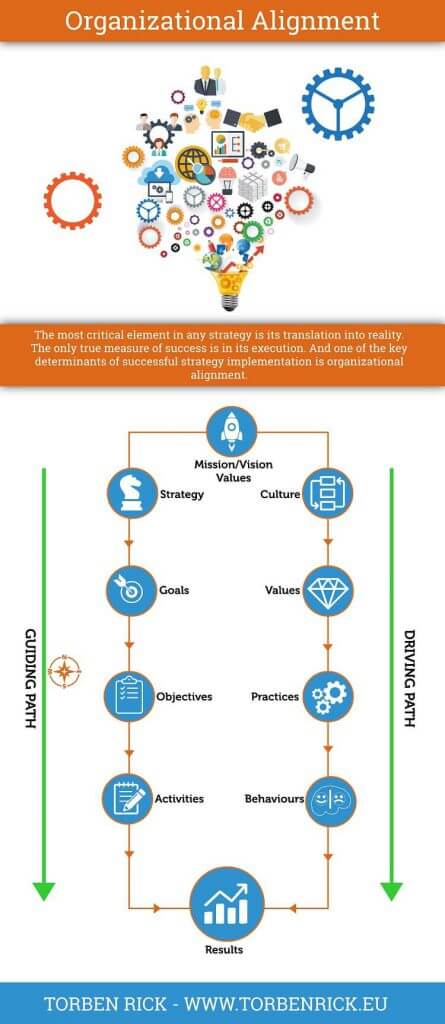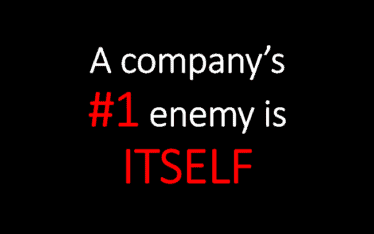”We” need to change “them” is NOT the way forward
Why most change management initiatives fail? To many leaders still believe that “we” need to change “them” is the way forward when it comes to change management.
Expressions like “mindset change”, and “changing people’s mindsets” or “changing attitudes”, often indicates a tendency towards imposed or enforced change, and it implies strongly that the organization believes that its people currently have the “wrong” mindset, which is never, the case. The fact is, no one likes to be changed, even if the change is ultimately beneficial.
Many leaders still believe that “we” need to change “them” is the way forward
Research shows that there’s actually a decrease in cognitive function when people feel as though they lack control over their work environment.
A far more effective approach would be to actually involve employees in solving business problems. As Dan Pink writes in his book “Drive”, the autonomy and skill development that comes with solving problems for oneself will do more to overcome resistance and motivate change than any strategy others can develop.
The real secret to successful change, is not to change people at all, but to empower them to find their own solutions and responses, with facilitation and support from managers, and tolerance and compassion from the leaders and executives.
Key determinants of successful change implementation is organizational alignment
The most critical element in any change management initiative is its translation into reality. The only true measure of success is in its execution. And one of the key determinants of successful change implementation is organizational alignment.

Companies most likely to be successful in making change work to their advantage are the ones that no longer view change as a discrete event to be managed, but as a constant opportunity to evolve the business.
Short URL & title:
Why most change management initiatives fail — https://www.torbenrick.eu/t/r/oad
Share it:
If you enjoyed this article, please take 5 seconds to share it on your social network. Thanks!








I like the chart – it’s a good visual aid to managing change.
I like the 80/20 rule, or in this case a variation on it that I read somewhere a long time ago and remembered it ever since. Let’s call it the 10/80/10 rule.
10% of people embrace change – they look forward to it.
80% are the crowd that will go along with change given a reason.
10% are the sabotours that will throw up roadblocks to change.
Which group do you focus on? – the embrace change group – I learned this the hard way!
I like the parallelism between guiding path and driving path. We all too often forget the former.
Another reason initiatives fail is inadequate understanding of the causal linkages on the “guiding” side of the path. Specifically, what is the set of objectives that will achieve the goal, and what are the activities to reach those objectives. Even more, what assumptions must we make for this logic to hold.
Keep up the great insights!
I agree partially with Torben. The basic principle of resistance to change works by inertia. The Change management is difficult area and it require multi-prong strategy to make successful change. It is mix of unlearning-learning, involvement, teamwork, empowerment, psychological and leadership. It require sustained effort over a long period of time to make effective change in a organization.
Completely agree with this premise – to be truly effective in transformation and change, particularly in creating/ growing a continuous improvement environment, you have to win hearts and minds. To do this, people must feel ownership and engagement in shaping their own (and their company’s future)- that their ideas are listened to and acted upon. Moreover, they must feel as though they can see how, their role contributes to the ongoing delivery of their organisation’s mission and how as individuals ,they will help to deliver the vision.
I completely agree with Terry Schmidt on his view about it being crucial for the organisation to be effective at both articulating its vision, purpose & mission and then have the leadership and wherewithal to deliver upon it. Otherwise, you may be engaging and empowering your staff in a change programme that is doomed to fail and there is nothing more soul destroying than that.
So many organisations think that they have made clear what it is that they are trying to achieve, but when you unpick the buzz words and the woolly language, it doesn’t really mean a great deal.
I think this all depends on what kind of change management you are talking about. As a consultant brought in when companies are really struggling, I have seen that there is a real danger in not taking bold action.
Sometimes you can’t bring everyone along with you because they don’t have the whole picture or have agendas that encourage resistance. As has been said often, no-one likes change. I’m sure no-one likes operations either but if you are very sick and the doctor doesn’t act, its all over. Crystal therapy and positive thoughts won’t help you…
If you have plenty of time, you can warm the water up slowly but if things are serious, you can be honest with people, ‘show them the books’ and work at engaging them as you go but you can’t stop to sit in a circle and sing songs to soothe them.
One of the most common reasons I have seen for change initiatives to fail is that leaders lose the will to see it through.
As soon as they encounter serious resistance they panic and try to slow things down instead of showing real leadership and persisting. Survival is not a popularity contest.
There are 2 statements I would like to leave you with:
You can’t cross a chasm in 2 steps
Management by committee is a recipe for disaster.
If you have the time, take the time, if you don’t, take action…
usually change managment is very easy but the way & solution of a change is of most important matter these days. so change managment for a total solution or for the worst as already shown in the century ago and everyone try to change managment for as a solution but from the beginning and at the end face with fail.
I believe one element that is often left out is the emotional connection to the change. What’s in it for me …. Make the change mean something, if it does not mean anything to anyone, then resistance will continue.
r/
Jesse
Quite a few commentators to this theme mention “empowerment” as the most effective means to overcome resistance to change. IMHO, there is no more effective way toward empowerment than offering to the employee an opportunity to become an entrepreneur at his existing job. As an employee, the guy was working for a wage. While his wage is nothing else but the exact market value of his labor at this particular time and location, the profit the employees investment of labor generates ends up in his employer’s pocket.
For some 200 years employees were not aware of that. They viewed their wages as fair pay for their fair work. They did not realize that the profit on their investment of labor is their property. Depriving them of that property is called theft in a capitalist society. This is the proper definition of human exploitation.
Now the average employee is aware of being exploited. Hence, he tries to be exploited less. Hence, he generates just enough profit, so his employer would stay in business. This amount of profit is abysmally below its potential, which can be generated by full cooperation among the workforce and between the workforce and the enterprise.
The employer who will understand that, will forfeit the profit on labor to its rightful owner, the worker. Such a move will maximize the profit on labor and enrich the worker.
As the rate of profit on labor and on means of production is the same rate, the profit on means of production will multiply too. The profit on means of production rightfully belongs to the owner of means of production — the owner of the enterprise.
Such empowerment should be the most effective, and it comes at no cost to the employer.